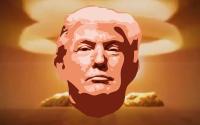27 September 2007Andrew Buncombe and Peter Popham
The inevitable happened sometime before noon.
Close to the Shwedagon pagoda, the golden gleaming monument in central Rangoon that has been the focus of protest for nine days, at least 10 monks were beaten up by police as thousands once again defied the authorities and tried to enter the holy shrine. Next, the police fired tear gas at them, and scores of the men in saffron robes were arrested and dragged away. From then on things only got worse.
By last night up to eight monks and civilians had, according to differing reports, been killed as the military regime finally resorted to violence to put down the soaring challenge to its rule.
Reuters reported that hospital and monastery sources claimed two monks and a civilian had been killed, while Burmese media operating outside of the country said the death toll was higher. Up to 300 monks and other demonstrators were reportedly arrested before the police again imposed a curfew and the streets of Rangoon cleared.
There was widespread condemnation of the violence last night and the United Nations special envoy on Burma, Ibrahim Gambari, was leaving for the region as members of the Security Council met for emergency consultations on the growing turmoil in the country.
"We condemn all violence against peaceful demonstrators and remind the country's leaders of their personal responsibilities for their actions," said a statement issued jointly by the EU and the US. European Union leaders backed a call by Gordon Brown for them to tighten their sanctions on Burma. The move is likely to result in curbs on investment – and possibly a total ban. The Prime Minister said: "The whole world is watching Burma now and the age of impunity is over for anyone in that regime who commits crimes against individuals or the people of Burma."
Despite the calls for restraint, yesterday's violent turn of events was, many believed, bound to happen. If anything they appeared all the more awful because of the slow, sliding inevitability. Overnight the authorities had moved in to arrest key democracy activists, among them a Burmese comedian called Zaganar and U Win Naing, a veteran opposition member. The comedian had been part of a group providing food and supplies to the monks.
But if anything there was even more defiance and determination as the demonstrators marched for the ninth successive day – once again with at least 100,000 people taking to the streets. In Mandalay, at least 10,000 people marched and reports from the city of Sitwe, on Burma's western seaboard, also suggested 10,000 people turned out to protest.
"They are marching down the streets, with the monks in the middle and ordinary people either side. They are shielding them, forming a human chain," said one observer in Rangoon.
By 2.30pm crowds of monks were marching towards the Sule pagoda in central Rangoon, singing nationalist songs and chanting: "People must not be slaughtered". But then the other protagonist in this story showed its face. Shots could be heard from several parts of the city as the security forces fired, apparently not only above the heads of the marchers.
A witness who was with the protesters told Channel 4 News: "A six-truck military convoy, headed by a jeep, drove straight towards us and roared down towards the Sule pagoda. As they passed an almighty spatter of automatic gunfire ripped through the air. There were shades of Tiananmen Square as people threw themselves and their bicycles on the ground, burying their heads in their hands or hugging their friends. Then a terrified human tide swept down the street, fleeing from the soldiers in my direction. A look of terror was etched on many faces."
The parallels with the events that culminated in the massacres of 1988 were stark. Back then, protests began in September 1987, out of the eye of the Western media, until a demonstration in March 1988 provoked a ferocious reaction in which about 100 civilians were killed. Continuing protests ushered in Burma's "summer of democracy".
A huge rally was called on 8 August 1988 – but the army killed 3,000 of those rebels. Burma lives in the shadow of that massacre.
Even if eight people died, it is chicken-feed for the military junta, which calls itself the State Peace and Development Council: in 1988 it took the lives of some 10,000 protesters. But this rebellion is still at a tender stage.
State television reported last night that one person had been killed after security forces were unable to disperse the "so-called monks". It claimed police had used "minimum force".
Burmese media located in neighbouring Thailand reported that three monks had been shot and killed in Rangoon's Ahlone Township. Zin Linn, the information minister for the country's self-styled government-in-exile, said eight people had been killed.
The regime revealed yesterday that no matter what position the monks hold in society, it is prepared to use violence against them as it finds itself with its back to the wall.
One Burma analyst wrote yesterday that if soldiers begin showing signs of siding with the rebels, that will be an indication that the rebels are winning. But it could also be the moment that the regime decides to crack down hard.






